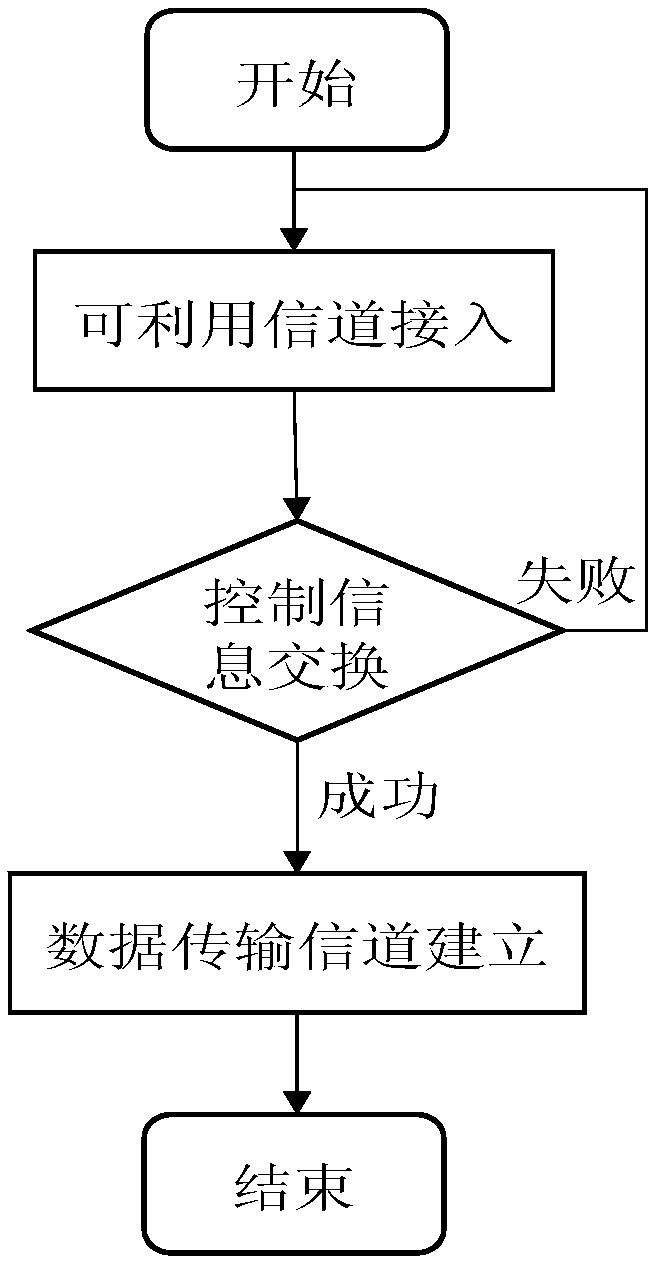Method for establishing control channel in cognitive radio network
A cognitive radio and control channel technology, applied in the field of control channel establishment in cognitive radio networks in cognitive radio networks, can solve the problems of uneven distribution of unauthorized users, the same channel, etc., so as to shorten the duration of information and reduce Time-consuming, size-reducing effects
- Summary
- Abstract
- Description
- Claims
- Application Information
AI Technical Summary
Problems solved by technology
Method used
Image
Examples
Embodiment Construction
[0052] In order to make the object, technical solution and advantages of the present invention more clear, the present invention will be further described in detail below in conjunction with the examples. It should be understood that the specific embodiments described here are only used to explain the present invention, not to limit the present invention.
[0053] The application principle of the present invention will be described in detail below in conjunction with the accompanying drawings.
[0054] The present invention proposes a method for establishing a control channel in a cognitive radio network, which considers the competition between multiple unlicensed users for the frequency band during the establishment of the control channel. In this method, the control channel and the data transmission channel may be different channels , after the control channel is established, the unlicensed users select the appropriate data transmission channel through the exchange of contro...
PUM
 Login to View More
Login to View More Abstract
Description
Claims
Application Information
 Login to View More
Login to View More - R&D
- Intellectual Property
- Life Sciences
- Materials
- Tech Scout
- Unparalleled Data Quality
- Higher Quality Content
- 60% Fewer Hallucinations
Browse by: Latest US Patents, China's latest patents, Technical Efficacy Thesaurus, Application Domain, Technology Topic, Popular Technical Reports.
© 2025 PatSnap. All rights reserved.Legal|Privacy policy|Modern Slavery Act Transparency Statement|Sitemap|About US| Contact US: help@patsnap.com



